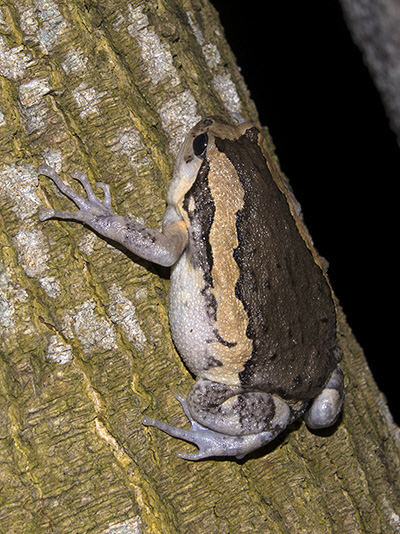
Fig 1
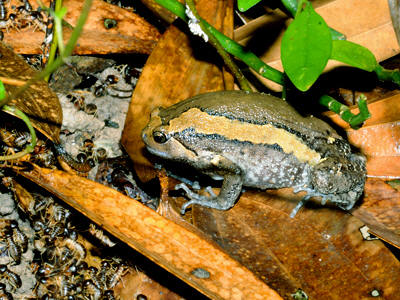
Fig 2

Fig 3
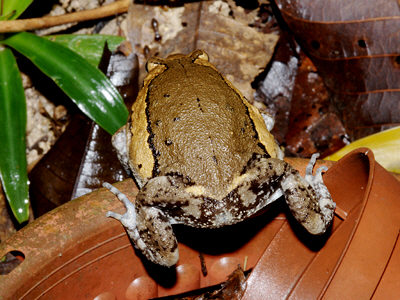
Fig 4
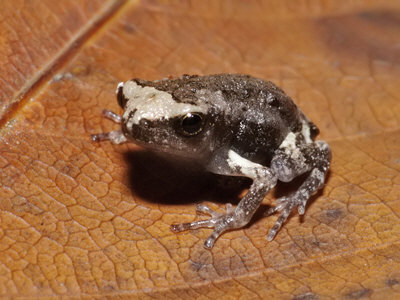
Fig 5
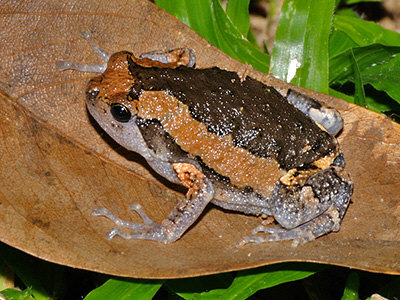
Fig 6

Fig 7
|
Family : MICROHYLIDAE
Species : Kaloula pulchra
Size (snout to vent) : Female 7.5 cm, male 7.0 cm
Play call
►
The Banded Bullfrog is a
highly adaptable species able to survive in disturbed habitats including
flooded grassland, roadside puddles and urban storm drains. By day it hides
in holes in the ground, under leaf litter or in the crevices of walls or
buildings.
The species is easily identified by the thick, black-edged, light brown to
orange band which extends from the head along each side of the body. The
upperside is dark to medium brown and the underside pale.
The mouth is wide, the head short and blunt and the eyes of moderate size.
Generally chubby in form, it will inflate itself and exude sticky mucus when feeling threatened.
Despite its squat body shape and relatively short legs, the Banded Bullfrog
can climb well and may ascend many metres into trees.
Its call is a loud,
cattle-like bellow, which can be heard after heavy rain has created flooded
pools in which the frogs assemble.
It feeds on small invertebrates, particularly ants and termites.
The Banded Bullfrog ranges from parts of southern India and Sri Lanka
through Myanmar, Thailand and parts of southern China and Indochina to
Peninsular Malaysia, Borneo, Sumatra, Java, Sulawesi and Flores. In
Singapore it is a highly successful introduced species.
Fig 1 : Climbing a steep tree trunk, Singapore..
Fig 2 : Banded Bullfrog preparing to feed on termites,
Singapore.
Fig 3 : The head is rounded, and the snout
blunt.
Fig 4 : Making an exit from a typical daytime hiding place - amongst flowerpots.
Fig 5 : Newly metamorphosed adult, measuring just 8 mm in length.
Fig 6 :
Specimen from Siem Reap, Cambodia.
Fig 7 : Tadpoles found in a an abandoned concrete structure, in
Singapore's secondary forest.
References :
Baker, N. & K. Lim, (Vertebrate Study Group, Nature Society
Singapore), 2008. Wild Animals Of Singapore. Draco Publishing and
Distribution Pte. Ltd.
Inger R. F., Lian T.F., 1996. The Natural History of Amphibians and
Reptiles in Sabah. Natural History Publications (Borneo) Sdn. Bhd.
Manthey U., Grossmann W., 1997. Amphibien und Reptilien Sudostasiens.
Natur und Tier - Verlag.
|